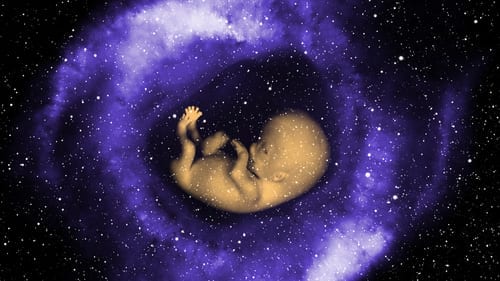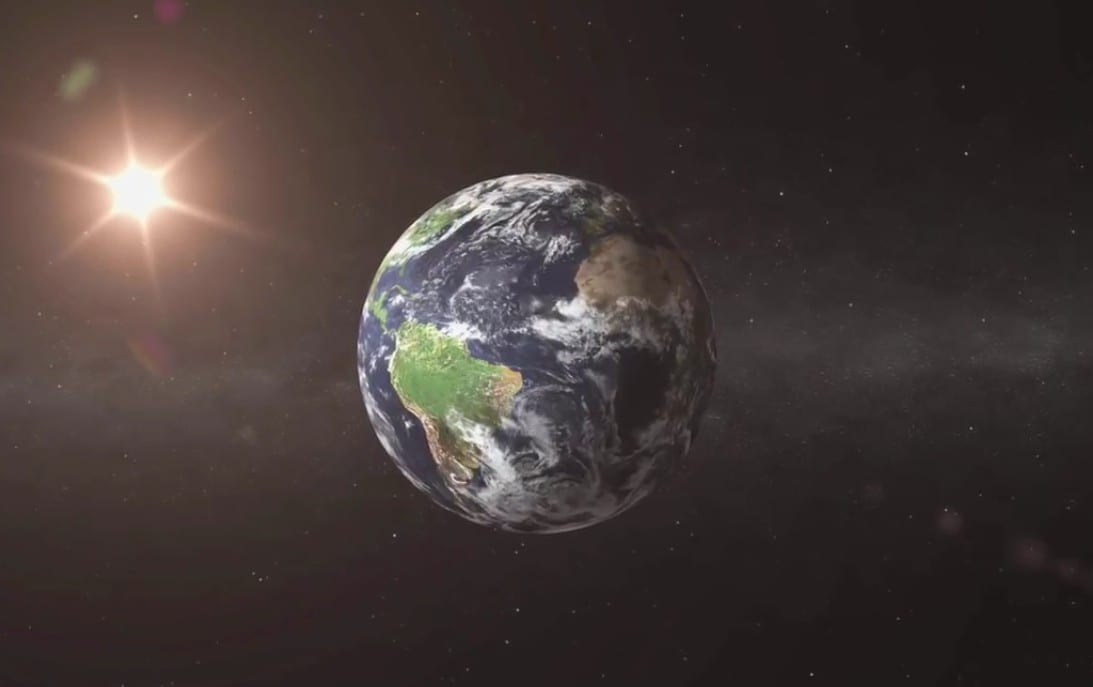Human beings have always asked the question: Do plants, animal life, or even sophisticated cultures exist on other planets?
This question was in full public eye during the 1950’s and 1960’s, when the first manned spacecraft were about to be launched.
In 1960, the astronomer Dr. Frank Drake took the first practical steps to finding an answer by scanning the skies in search of radio signals from alien cultures. In 1961, he published the “Drake Equation” – a statistical formula that sought to estimate the number of advanced civilizations in the universe. The calculations took into account a number of factors, such the estimated rate of stars’ development, the number of planets that might have suitable conditions for life, the estimated period of existence of advanced civilizations. Dr. Drake postulated that in our galaxy alone, there are some 10,000 civilizations in addition to our own. It is interesting to note that since Drake’s first estimate, subsequent astronomers have raised this estimate significantly.
What does the Torah say on this issue?
During the preparations for the first manned flights into space, modern-day Torah Sages were asked the question: What does the Torah tell us about the possibility of sentient life existing elsewhere in the universe? Their answer was usually along these lines: We do not know of any specifically negative answer in the Torah, so that essentially, there is no contradiction between the opinions of those who claim that such civilizations exist and any basic tenet of Jewish belief. Still, the overall spirit of the Torah implies that there is no life elsewhere in the universe, other than that which exists here on Earth.
Before man landed on the moon and investigated it, astronomers argued vehemently about the possibility of life existing there. In his book, Heavenly Hosts, the astronomer, Dr. N. Vidal notes with amazement that the great Sage and Kabbalist, Rabbi Mordechai Sharabi, was asked about the possibility of finding life on the Moon. The elderly Rabbi replied with a quotation from the preface to the Tikkunei Zohar, in the section entitled Patach Eliyahu:
“And You [God] created heaven and earth… and on earth there are trees and grasses… and birds, fish, domestic animals, wild beasts and human beings.”
“In view of this statement,” continued the Rabbi, “it is highly unlikely that there is life on the moon, for it states explicitly that: ‘on the earth, there are trees and grasses, birds and fish, domestic animals, wild beasts and human beings.’ This implies that only here on Earth were these creatures created.”
Are Alien Life-forms mentioned in the Zohar?
The first step in weighing the large amount of evidence that suggests that we have been visited by alien life-forms, is to sift out all the lies and fantasies, such as cases in which a supposed UFO was actually a secret American military plane. Many past and future sightings may also be dismissed in similar ways. Still, even after all the sifting, we are left with an impressive body of evidence. Are there any sources in the Torah that can explain these manifestations, without resource to flying saucers?
In a number of places in the Zohar and Talmud, the Sages tell us about the existence of strange creatures, usually invisible, which are similar to human beings in several ways and similar to angels in other. They are called shedim (often translated as “demons”), and are made from a turbid spirituality, somewhat insubstantial. They can change their shape and appearance, and can appear to human beings in a variety of forms.
Is it possible that these shedim are the “aliens” of modern times? This is a particularly apt question since some people swear that they have seen aliens looking like those portrayed in science fiction films. Could these films be a reflection of real life? Or, perhaps, real life reflects what is seen in the movies. Perhaps those people saw shedim, who resembled, in their eyes, creatures from outer space.
The Zohar provides us with other explanations on this subject; it speaks about alien life forms that exist beneath our world. While the Zohar may not intend its comments to be taken literally, at face value, they are a clear statement of the existence of creatures beneath our world, of which we are unaware.
The Zohar explains that there are seven lands in the lower world: Eretz, Adama, Arka, Gia, Neshia, Tzia and Tevel, which envelop each other like the skins of an onion. The highest and largest of these, Tevel, is the land upon which we live. The Zohar adds that there are very small creatures in all these places, humanoid in form, which also have an awareness of God; though one far inferior to our own. Some of these creatures wear clothing while others are covered by layers (or perhaps armor), that may be red, black, white or a mixture of colors. Many live no longer than ten years. The Zohar tells the story about Rabbi Chiya and Rabbi Yossi, who were on a journey together and stopped to rest alongside a cracked rock. Suddenly, one of the inhabitants of Arka appeared before them and told them that in his land, there are inhabitants who look different than him. Commenting on Genesis 8:14, the Zohar explains that when Cain was banished, “from the face of the earth,” he was accepted by the inhabitants of Arka, a lower land.
This information, which is surely distant from the world of research, deals with alien creatures which may exist in the inner layers of our world, in places not yet investigated by modern science. Are the aliens from outer space in fact the creatures already known to Torah Sages 2,000 years ago? The Sages knew of many mysterious things that exist on our tiny planet, which is still so unknown.
Dr. Vidal further suggests that according to this quotation, not only does life not exist on the moon, it may not exist anywhere else in the universe.
It is also true that ever since contemporary Sages expressed their views on this subject, all the claims made by scientists about the existence of life on other planets have been treated with strong reservation by the observant Jewish public. Conversely, as time has gone by, outstanding scientists, such as the late Dr. Carl Sagan, have added their voice to the opinions expressed by Dr. Drake. Dr. Sagan believed that the number of planets occupied by advanced civilizations was far higher than in Dr. Drake’s estimate.
At the same time, slowly but surely, as research on this subject progresses, many in the scientific world seem to be coming round to the opposite view held by Dr. Drake. The following is an extract from an article written by William Broad, an award winning science reporter at the New York Times, February 8, 2000, under the headline: “Maybe We Are Alone in the Universe, After All.” The article is a faithful description of the logical conclusions that have brought about this turnaround:
“In the last few decades, a growing number of astronomers have promulgated the view that alien civilizations are likely to be scattered among the stars like grains of sand, isolated from one another by the emptiness of interstellar space. Just for Earth’s own galaxy, the Milky Way, experts have estimated that there might be up to one million advanced societies… Now, two prominent scientists say the conventional wisdom is wrong. The alien search, they add, is likely to fail.”
The astronomer Dr. Donald Brownlee and the geologist Dr. Peter Ward from the University of Washington, claim that based upon the latest astronomical findings, geological research and the fossil record, it is the specific composition of matter on earth and its relative stability in space that permit the development of life. Contrary to previous assumptions, these turn out to be extremely rare conditions. Everywhere else in the universe, conditions do not permit life – radiation levels are too high, key elements are lacking and planets lack orbital stability.
In their book: “Rare Earth,” the two authors write that many of the basic assumptions made by scientists such as Dr. Drake and Dr. Sagan, suggesting that there is life on other planets, have no foundation in reality. “The Drake Equation is riddled with hidden optimistic assumptions,” state the authors. They also claim that there are many astro-biologists who agree with them. According to Ward, the latest research indicates that most planets in the universe suffer from ongoing catastrophic events, such as a high rate of meteor strikes – many more than we suffer here on Earth. Ward writes that without the protection we get from the giant planet Jupiter – whose strong gravitational field attracts dangerous space debris – the number of meteor strikes on Earth would be 10,000 times higher. Thus, the chances of life existing in the center of the galaxies are exceedingly small: “If you’re in the interior of the galaxy,” Dr. Ward said, “you’re always getting bombarded.”
According to Ward, new research has revealed that very high levels of radiation comprising X-rays, gamma rays and ionizing radiation are also present in the center of galaxies, which preclude the development of life. As listed by the two authors, the other very rare conditions found on earth required for life are: a suitable, precise distance from the sun, which allows for the existence of liquid water (were we closer to the sun, the water on Earth would evaporate; further away, it would freeze) and the existence of moons, which stabilize the planet’s rotation allowing for moderate climatic changes.
Ward and Brownlee conclude: “These are extremely rare conditions, but it seems that there are many who don’t want to recognize the fact.”





